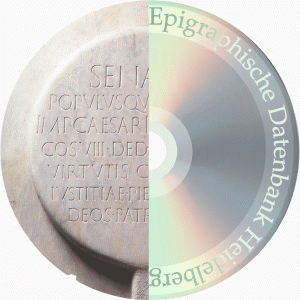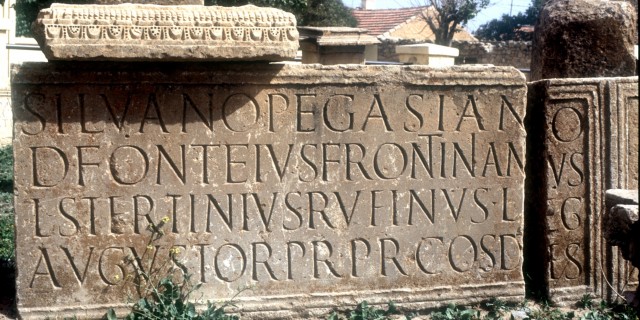 The task of the Epigraphic Database Heidelberg (EDH) is the systematic entry of ancient Latin and bilingual (usually Latin and Greek) inscriptions into a complex database. In EAGLE (Electronic Archives of Greek and Latin Epigraphy) EDH is responsible for the inscriptions of the Roman provinces.
The task of the Epigraphic Database Heidelberg (EDH) is the systematic entry of ancient Latin and bilingual (usually Latin and Greek) inscriptions into a complex database. In EAGLE (Electronic Archives of Greek and Latin Epigraphy) EDH is responsible for the inscriptions of the Roman provinces.
As a result of its interdisciplinary approach, conception and method of work, EDH is to be counted among the leading international database projects that collects and provides reliable historical analysis of epigraphic monuments. A distinguishing feature of EDH is its regional focus, its capability of combining the stored metadata as freely as possible and the reciprocal linking of the Epigraphic Text Database with both of the constituent databases of EDH, the Bibliographic Database and the Photographic Database.
The Epigraphic Text Database is the heart of EDH and contains 65,000 inscriptions at present. Almost all of the records present texts, which have already either been edited in the monumental Inscription corpora – in many cases still valid, but often do not fulfill the standards of modern textual editorial practice – or published, revised and discussed in thousands of scholarly articles. The texts and metadata of the inscriptions are thus presented on the basis of up to date scholarly research. One of the basic principles of the working method of EDH is that readings are not simply accepted from the edtions and secondary literature. To the extent that it is possible, these readings are verified at least on the basis of drawings or photographs – in the case of the latter these belong to the records of the Photographic Database – or ideally through autopsy.
EDH enjoys a lively exchange of information with native and foreign scholars and institutions. This makes it possible within the framework of external cooperation to include their specialist and regionally founded profile in the data presented by EDH.

